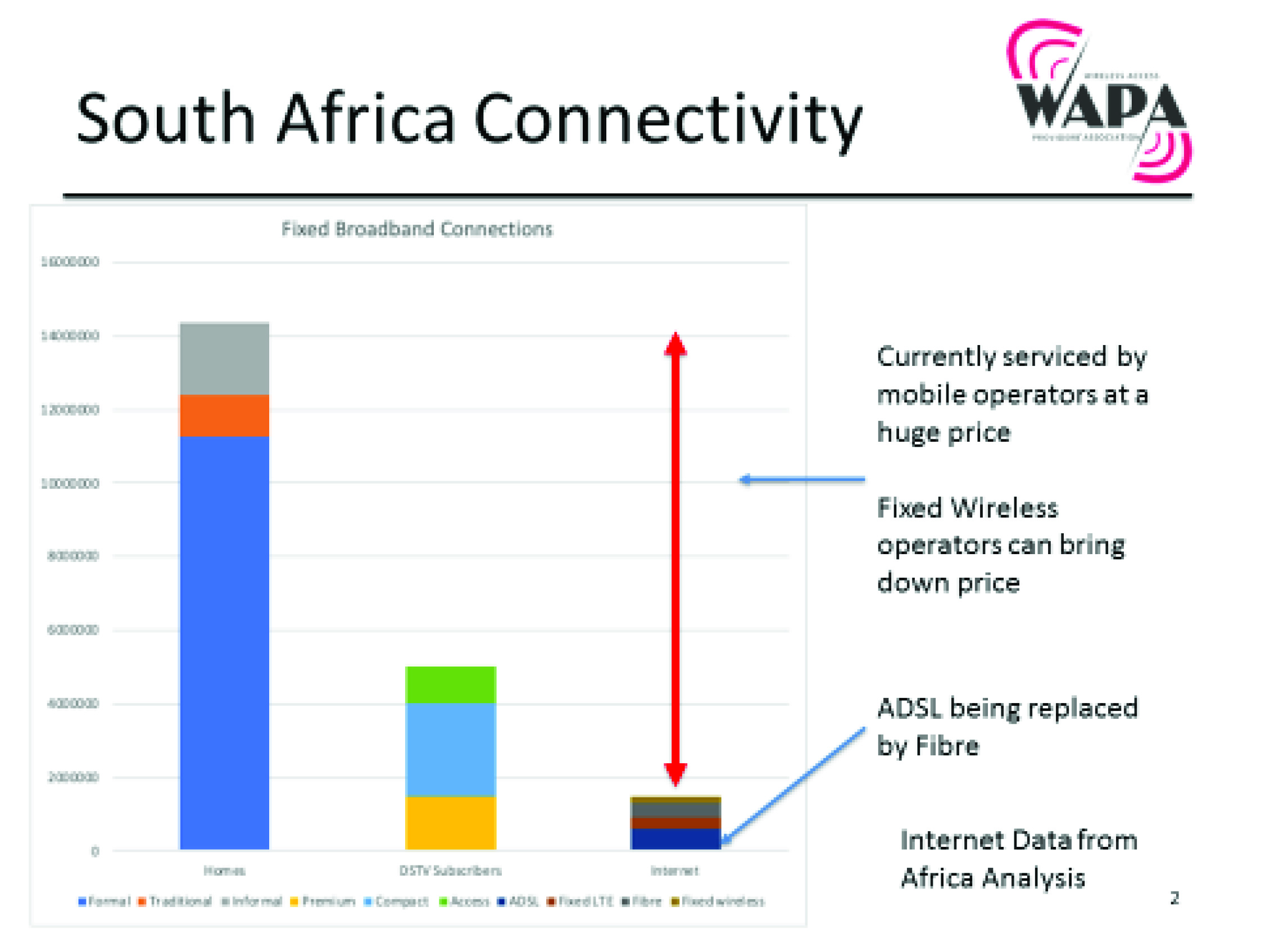Tim Genders, Chairperson of WAPA, says that the goal is that every home in South Africa should be connected to the internet, with equitable pricing, within the next 10 years. And WAPA members will play a huge role in this programme, which is why we are covering the Spectrum Licensing process.
While one of the goals – connectivity to every household – may be a reality, the same cannot be said of the affordability/equitability of pricing. It is no secret that low-income areas pay 80 times more for data than data in high-income areas.

Here’s a quick outline of One-owner-per-frequency versus Dynamic Spectrum Allocation:
|
One-owner-per-frequency |
Dynamic Spectrum Allocation |
|
High price received in auctions |
N/A |
|
Protection of the existing mobile network operators (high barrier to entry for others) |
Maintains high quality of connection
|
|
Limited competition |
Spectrum fully used |
|
High price of data to end user |
Lower prices to the end user |
|
|
Homes |
DSTV subscribers |
Internet |
|
|
Formal |
11 252 000 |
|
|
77.6% |
|
Traditional |
1 145 500 |
|
|
7.9% |
|
Informal |
1 972 000 |
|
|
13.6% |
|
Premium |
|
1 500 000 |
|
|
|
Compact |
|
2 500 000 |
|
|
|
Access |
|
1 000 000 |
|
|
|
ADSL |
|
|
600 000 |
|
|
Fixed LTE |
|
|
300 000 |
|
|
Fibre |
|
|
400 000 |
|
|
Fixed wireless |
|
|
200 000 |
|
|
ADSL |
600 000 |
|
Fixed LTE |
300 000 |
|
Fibre |
400 000 |
|
Fixed wireless |
200 000 |
Africa analysis: 1.5 to 1.7 million connected households
WAPA proposed to the government on 2 April 2019 that allocating further spectrum should be done on a many-owners-per-frequency basis. This proven global model called dynamic spectrum allocation is promoted and driven by the Dynamic Spectrum Alliance. In essence, a frequency is allocated to a primary owner and if they are not using it in a particular area, then a secondary owner can use the frequency. This chain allocation to a tertiary owner should the secondary owner also not use the frequency.
This method brings down the price of the spectrum and allows meaningful competition to arise. The end result will be more connectivity at a higher quality and, importantly, a lower price to 90% of South African homes currently relying on mobile data.
The frequencies where WAPA requested this method to be adopted for future re-allocation are 470-694 MHz, 3.6-3.7 GHz, 5.9 to 6.4 GHz and 24 GHz.




 Facebook
Facebook
 Linkedin
Linkedin
 Twitter
Twitter
 Instagram
Instagram
